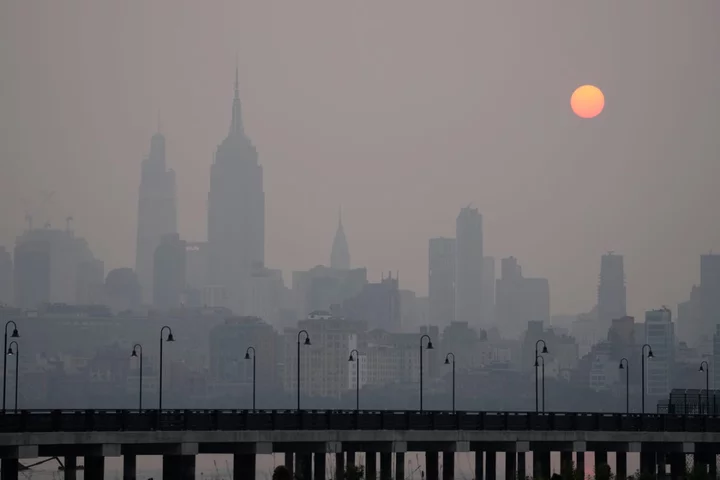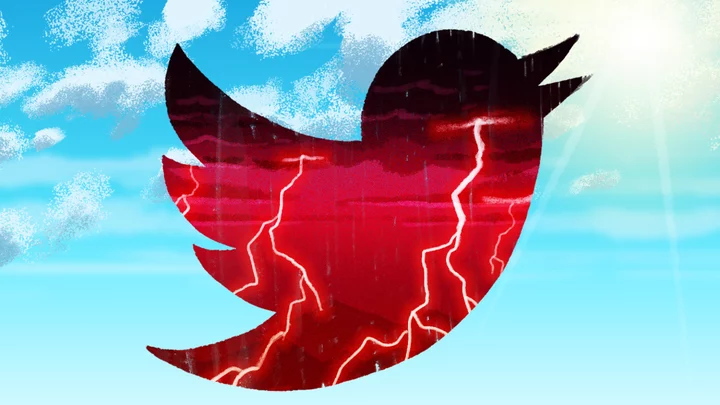New York City and large parts of the tri-state area have been placed under Code Red air quality alerts as smoke from wildfires in Canada continue to create hazy skies. The city is currently ranked fifth for the worst air quality in the world, following Toronto, Hanoi, Dhaka and New Delhi, as the Air Quality Index on Wednesday reached “unhealthy” levels across New York and other major US cities. The poor air quality is a result of more than 400 wildfires raging in Canada, leading to mass evacuations in the province of Quebec. Meanwhile, schools in New York City and Washington DC have cancelled outdoor activities such as recess and gym. As the wildfires continue to rage on, air quality in New York is expected to get worse later Wednesday afternoon, according to forecasters. But amidst an ongoing climate crisis, many climate scientists warn that wildfires could become more frequent and intense. Many officials have urged people to limit their time outdoors and wear masks to protect themselves from the smoke. In fact, wildfire smoke carries a number of pollutants that can pose a number of risks and hazardous effects. Here’s a list of dos and don’ts to help keep yourself safe during the Code Red air quality alert. Wear a mask If the Covid-19 taught us anything, it’s that masks help keep us safe from getting sick. The same goes for wildfire smoke. Masks can protect you from deadly air pollutants found in wildfire smoke such as fine particulate matter, also known as PM 2.5. But not all masks are created equal. While surgical masks work fine in protecting your lungs from the smoke, the most preferred method of protection are N95 or KN95 masks. Both N95 and KN95 masks work by fitting tightly to the face and filtering air using multiple layers of material, which are designed to trap extremely small particles. Stay indoors, or take precaution if you need to go outside New York City Mayor Eric Adams told New Yorkers in a statement to “limit outdoor activity to the greatest extent possible.” In addition to masking up, people should also avoid performing strenuous activities outside – such as exercising or biking – and change their clothes once they return home. Air purifiers vs air conditioners Outdoor air, including fine particles from wildfire smoke, can also enter your home through open windows, vents, or window air conditioning units. The Environmental Protection Agency (EPA) recommends using a portable air purifier to help improve indoor air quality. Indoor fans can also be used to help circulate air. The EPA also states that central AC systems, in which air is cooled and distributed through ducts, are safe to use during air quality alerts. “If you have an HVAC system with a fresh air intake, set the system to recirculate mode, or close the outdoor intake damper,” the agency said. As for window AC units, the EPA warns against running the portable AC during “smoky conditions because it can result in more smoke being brought inside.” Take steps to save energy and reduce pollution New Yorkers are encouraged to avoid activities that could create more fine particles indoors, such as smoking cigarettes; spraying aerosol products; using gas, propane or wood-burning stoves and furnaces; frying or broiling food; and burning candles or incense. The New York State Department of Environmental Conservation also recommends closing the blinds or shades to preserve cooled air, and limiting use of household appliances. Follow for live air quality alert updates. Read More Air quality – live: New York under Code Red alert and kids banned from outside play over Canada wildfire smoke Wildfire smoke tracker: Where the air pollution is headed next NYC and DC public schools cancel outdoor activities as wildfire smoke plagues East Coast As Pride Month begins: 5 LGBTQ+ icons who have helped shape pop culture and history Al Pacino, 83, expecting his fourth child with 29-year-old girlfriend Pest control expert weighs in on viral blue sofa debate
New York City and large parts of the tri-state area have been placed under Code Red air quality alerts as smoke from wildfires in Canada continue to create hazy skies.
The city is currently ranked fifth for the worst air quality in the world, following Toronto, Hanoi, Dhaka and New Delhi, as the Air Quality Index on Wednesday reached “unhealthy” levels across New York and other major US cities.
The poor air quality is a result of more than 400 wildfires raging in Canada, leading to mass evacuations in the province of Quebec. Meanwhile, schools in New York City and Washington DC have cancelled outdoor activities such as recess and gym.
As the wildfires continue to rage on, air quality in New York is expected to get worse later Wednesday afternoon, according to forecasters. But amidst an ongoing climate crisis, many climate scientists warn that wildfires could become more frequent and intense.
Many officials have urged people to limit their time outdoors and wear masks to protect themselves from the smoke. In fact, wildfire smoke carries a number of pollutants that can pose a number of risks and hazardous effects.
Here’s a list of dos and don’ts to help keep yourself safe during the Code Red air quality alert.
Wear a mask
If the Covid-19 taught us anything, it’s that masks help keep us safe from getting sick. The same goes for wildfire smoke. Masks can protect you from deadly air pollutants found in wildfire smoke such as fine particulate matter, also known as PM 2.5. But not all masks are created equal.
While surgical masks work fine in protecting your lungs from the smoke, the most preferred method of protection are N95 or KN95 masks. Both N95 and KN95 masks work by fitting tightly to the face and filtering air using multiple layers of material, which are designed to trap extremely small particles.
Stay indoors, or take precaution if you need to go outside
New York City Mayor Eric Adams told New Yorkers in a statement to “limit outdoor activity to the greatest extent possible.”
In addition to masking up, people should also avoid performing strenuous activities outside – such as exercising or biking – and change their clothes once they return home.
Air purifiers vs air conditioners
Outdoor air, including fine particles from wildfire smoke, can also enter your home through open windows, vents, or window air conditioning units. The Environmental Protection Agency (EPA) recommends using a portable air purifier to help improve indoor air quality. Indoor fans can also be used to help circulate air.
The EPA also states that central AC systems, in which air is cooled and distributed through ducts, are safe to use during air quality alerts. “If you have an HVAC system with a fresh air intake, set the system to recirculate mode, or close the outdoor intake damper,” the agency said.
As for window AC units, the EPA warns against running the portable AC during “smoky conditions because it can result in more smoke being brought inside.”
Take steps to save energy and reduce pollution
New Yorkers are encouraged to avoid activities that could create more fine particles indoors, such as smoking cigarettes; spraying aerosol products; using gas, propane or wood-burning stoves and furnaces; frying or broiling food; and burning candles or incense.
The New York State Department of Environmental Conservation also recommends closing the blinds or shades to preserve cooled air, and limiting use of household appliances.
Follow for live air quality alert updates.
Read More
Air quality – live: New York under Code Red alert and kids banned from outside play over Canada wildfire smoke
Wildfire smoke tracker: Where the air pollution is headed next
NYC and DC public schools cancel outdoor activities as wildfire smoke plagues East Coast
As Pride Month begins: 5 LGBTQ+ icons who have helped shape pop culture and history
Al Pacino, 83, expecting his fourth child with 29-year-old girlfriend
Pest control expert weighs in on viral blue sofa debate









